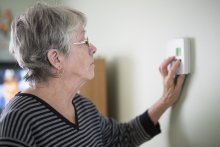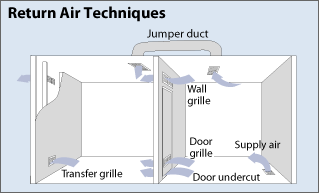Repair Heating System
Repair Heating System: your home uses more energy and costs more money than any other system in your home — typically making up about 29% of your utility bill.
Properly maintaining and upgrading your heating system is essential for saving money and increasing comfort. However, it’s important to note that solely relying on an energy-efficient furnace won’t have as significant an impact on energy bills as implementing a whole-house approach. By combining equipment maintenance and upgrades with recommended insulation, air sealing, and thermostat settings, you can achieve approximately 30% energy savings while also reducing environmental emissions. Remember to prioritize the repair and maintenance of your heating system for optimal efficiency.
Heating Tips to avoid a Repair Heating system

To maintain the efficiency of your heating system, it is important to follow these guidelines. For conventional heating systems, adjust your programmable thermostat to a comfortable low temperature during winter and lower it further when sleeping or away. However, for heat pump systems, there is no need to adjust the temperature when you’re not home. Heat pumps are highly efficient, so simply set the temperature and leave it. Remember to clean or replace filters on furnaces regularly and ensure that warm-air registers, baseboard heaters, and radiators are unobstructed.
To ensure the optimal functioning of your heating system, it is essential to eliminate trapped air from hot-water radiators periodically. If you are uncertain about how to perform this task, it is advisable to seek assistance from a professional. Additionally, placing heat-resistant radiator reflectors between exterior walls and the radiators can improve the efficiency of heat distribution. Lastly, remember to turn off kitchen, bath, and other exhaust fans within 20 minutes after cooking or bathing, and when replacing them, consider opting for high-efficiency, low-noise models.
When repairing your heating system, it is important to consider energy efficiency. To maintain warmth during winter, remember to keep the draperies and shades on your south-facing windows open during the day to allow sunlight into your home. At night, close them to reduce any cold drafts from the windows. When purchasing new heating equipment, choose energy-efficient products. Your contractor at Eco Friendly Air Conditioning and Heating can provide you with energy fact sheets for different types, models, and designs to help you compare energy usage. Make sure to refer to the efficiency standards for information on minimum ratings, and look for the ENERGY STAR label when making your purchase.
Repair Heating System
Heat is distributed through your home in a variety of ways. Forced-air systems use ducts that can also be used for central air conditioning and heat pump systems. Radiant heating systems have two unique heat distribution systems – steam radiators and hot water radiators. Schedule now with Eco Friendly Air Conditioning, Heating, Clean Ducts
Steam Radiators
Steam heating, despite its historical significance, presents certain limitations when it comes to efficiency and control. The process of boiling and condensing water in steam systems is less efficient compared to modern heating technologies. Additionally, there is often a notable delay between the boiler activation and the heat reaching the radiators, making it challenging to implement control strategies like a night setback system. These factors contribute to the difficulty in effectively managing and optimizing steam heating systems. Therefore, when considering repair options for a heating system, it may be prudent to explore alternative, more efficient technologies that offer improved control and energy conservation.
The first central heating systems for buildings used steam distribution because steam moves through piping without the use of pumps. Non-insulated steam pipes often deliver unwanted heat to unfinished areas, making fiberglass pipe insulation — which can withstand high temperatures—very cost-effective.
Regular maintenance for steam radiators depends on whether the radiator is a one-pipe system (the pipe that supplies steam also returns condensate) or a two-pipe system (a separate pipe returns condensate). One-pipe systems use automatic air vents on each radiator, which bleed air as steam fills the system and then shut automatically when steam reaches the vent. A clogged air vent will keep a steam radiator from heating up. An air vent stuck open allows steam to continually escape to the living space, raising relative humidity and wasting fuel. Air vents can sometimes be cleaned by boiling them in a water and vinegar solution; however, they usually need to be replaced.
Steam radiators can warp the floor they are on and thermal expansion and contraction over time can dig ruts into the floor. Both of these effects can cause the radiator to tilt, preventing water from properly draining from the radiator when it cools. This will cause banging noises when the radiator is heating up. Shims should be inserted under radiators to pitch them slightly toward the pipe in a one-pipe system or toward the steam trap in a two-pipe system.
In two-pipe systems, older steam traps often stick in either the open or closed position, causing unbalance in the distribution system. If you seem to have problems with some radiators providing too much heat and others providing too little, this might be the cause. The best approach is often to simply replace all the steam traps in the system.
Steam radiators located on exterior walls can cause heat loss by radiating heat through the wall to the outdoors. To prevent such heat loss, you can install heat reflectors behind these radiators. The reflector should face away from the wall and should be the same size or slightly larger than the radiator. Periodically clean the reflectors to maintain maximum heat reflection.
Hot Water Radiators
Hot-water radiators are one of the most common heat distribution systems in newer homes, second only to forced-air systems. They are typically a baseboard-type radiator or an upright design that resembles steam radiators. The most common problem in hot-water systems is unwanted air in the system. At the start of each heating season, while the system is running, go from radiator to radiator and open each bleed valve slightly, then close it when water starts to escape through the valve. For multi-level homes, start at the top floor and work your way down.
One way to save energy in hot-water systems is to retrofit them to provide separate zone control for different areas of large homes. Zone control is most effective when large areas of the home are not used often or are used on a different schedule than other parts of the home. A heating professional can install automatic valves on the hot-water radiators, controlled by thermostats in each zone of the house. Using programmable thermostats will allow you to automatically heat and cool off portions of your home to match your usage patterns.
Zone control works best in homes designed to operate in different heating zones, with each zone insulated from the others. In homes not designed for zone control, leaving one section at a lower temperature could cause comfort problems in adjacent rooms because they will lose heat to the cooler parts of the home. Zone control will also work best when the cooler sections of the home can be isolated from the others by closing doors. In some cases, new doors may be needed to isolate one area from another. Cooler parts of the home should be kept around 50°F to prevent water pipes from freezing. Never shut off heat entirely in an unused part of your home. Schedule Now with Eco friendly Air Repair Heating System, Air Conditioning, Clean Ducts
Your air ducts are one of the most important systems in your home, and if the ducts are poorly sealed or insulated they are likely contributing to higher energy bills.
Your home’s duct system is a branching network of tubes in the walls, floors, and ceilings; it carries the air from your home’s furnace and central air conditioner to each room. Ducts are made of sheet metal, fiberglass, or other materials.
Ducts that leak heated air into unheated spaces can add hundreds of dollars a year to your heating and cooling bills, but you can reduce that loss by sealing and insulating your ducts. Insulating ducts in unconditioned spaces is usually very cost-effective. Existing ducts may also be blocked or may require simple upgrades.
Designing and Installing New Duct Systems
In new home construction or in retrofits, proper duct system design is critical. In recent years, energy-saving designs have sought to include ducts and heating systems in the conditioned space.
Efficient and well-designed duct systems distribute air properly throughout your home without leaking to keep all rooms at a comfortable temperature. The system should provide balanced supply and return flow to maintain a neutral pressure within the house.
Even well sealed and insulated ducts will leak and lose some heat, so many new energy-efficient homes place the duct system within the conditioned space of the home. The simplest way to accomplish this is to hide the ducts in dropped ceilings and in corners of rooms. Ducts can also be located in a sealed and insulated chase extending into the attic or built into raised floors. In both of these latter cases, care must be taken during construction to prevent contractors from using the duct chases for wiring or other utilities.
In either case, actual ducts must be used — chases and floor cavities should not be used as ducts. Regardless of where they are installed, ducts should be well sealed. Although ducts can be configured in a number of ways, the “trunk and branch” and “radial” supply duct configurations are most suitable for ducts located in conditioned spaces.
Air return duct systems can be configured in two ways: each room can have a return duct that sends air back to the heating and cooling equipment, or return grills can be located in central locations on each floor. For the latter case, either grills must be installed to allow air to pass out of closed rooms, or short “jumper ducts” can be installed to connect the vent in one room with the next, allowing air to flow back to the central return grilles. Door undercuts help, but they are usually not sufficient for return airflow. Schedule now repair heating system, air conditioning, clean ducts
You can perform a simple check for adequate return air capacity by doing the following:
- Close all exterior doors and windows
- Close all interior room doors
- Turn on the central air handler
- “Crack” interior doors one by one and observe if the door closes or further opens “on its own.” (Whether it closes or opens will depend on the direction of the air handler-driven air flow.) Rooms served by air-moved doors have restricted return air flow and need pressure relief as described above.Schedule now
Maintaining and Upgrading Existing Duct Systems
Sealing your ducts to prevent leaks is even more important if the ducts are located in an unconditioned area such as an attic or vented crawlspace. If the supply ducts are leaking, heated or cooled air can be forced out of unsealed joints and lost. In addition, unconditioned air can be drawn into return ducts through unsealed joints.
Although minor duct repairs are easy to make, qualified professionals should seal and insulate ducts in unconditioned spaces to ensure the use of appropriate sealing materials.
Aside from sealing your ducts, the simplest and most effective means of maintaining your air distribution system is to ensure that furniture and other objects are not blocking the airflow through your registers, and to vacuum the registers to remove any dust buildup.
Existing duct systems often suffer from design deficiencies in the return air system, and modifications by the homeowner (or just a tendency to keep doors closed) may contribute to these problems. Any rooms with a lack of sufficient return airflow may benefit from relatively simple upgrades, such as the installation of new return-air grilles, undercutting doors for return air, or installing a jumper duct.
Some rooms may also be hard to heat and cool because of inadequate supply ducts or grilles. If this is the case, you should first examine whether the problem is the room itself: fix any problems with insulation, air leakage, or inefficient windows first. If the problem persists, you may be able to increase the size of the supply duct or add an additional duct to provide the needed airflow to the room.
Minor Duct Repair Tips
- Check your ducts for air leaks. First, look for sections that should be joined but have separated and then look for obvious holes.
- Duct mastic is the preferred material for sealing ductwork seams and joints. It is more durable than any available tape and generally easier for a do-it-yourself installation. Its only drawback is that it will not bridge gaps over ¼ inch. Such gaps must be first bridged with web-type drywall tape or a good quality heat approved tape.
- If you use tape to seal your ducts, avoid cloth-backed, rubber adhesive duct tape — it tends to fail quickly. Instead, use mastic, butyl tape, foil tape, or other heat-approved tapes. Look for tape with the Underwriters Laboratories (UL) logo.
- Remember that insulating ducts in the basement will make the basement colder. If both the ducts and the basement walls are not insulated, consider insulating both. Water pipes and drains in unconditioned spaces could freeze and burst if the heat ducts are fully insulated be-cause there would be no heat source to prevent the space from freezing in cold weather. However, using an electric heating tape wrap on the pipes can prevent this. Check with a professional contractor.
- Hire a professional to install both supply and return registers in the basement rooms after converting your basement to a living area.
- Be sure a well-sealed vapor barrier exists on the outside of the insulation on cooling ducts to prevent moisture condensation.
- If you have a fuel-burning furnace, stove, or other appliance or an attached garage, install a carbon monoxide (CO) monitor to alert you to harmful CO levels.
- Be sure to get professional help when doing ductwork. A qualified professional should always perform changes and repairs to a duct system.
Carbon Monoxide Detectors
Carbon monoxide (CO) detectors are required in new buildings in many states. They are highly recommended in homes with fuel-burning appliances such as natural gas furnaces, stoves, ovens, water heaters, and space heaters. An alarm signals if CO reaches potentially dangerous levels.










